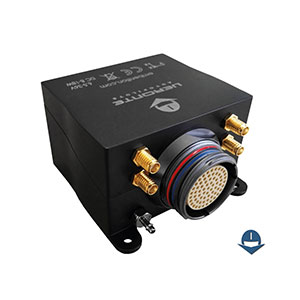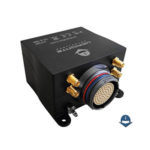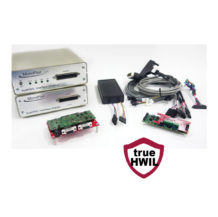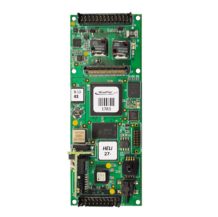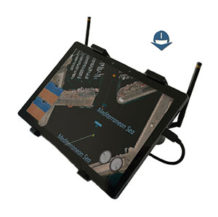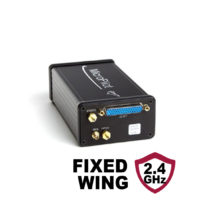Veronte BCS Autopilot Control Station
Veronte Autopilot electronics for control station enables communications between the PC in the control station and the Veronte Autopilot unit onboard the unmanned vehicle.
View cart
- Description
- Specifications
Description
Veronte BCS (Basic Control Station) Autopilot electronics for control station enables communications between the PC in the control station and the Veronte Autopilot unit onboard the unmanned vehicle (drone, UAV, USV, UGV…).
Key Features
- Veronte to PC connection
- Any PC or Tablet
- Embedded datalink & sensors
- Telemetry & telecommand
- Joystick, tracker, servo, tunnels
Embedded GPS & Sensors
Hardware in Veronte Autopilot for control station embeds a GPS receiver and multiple sensors, such as the ones in Veronte Autopilot. It enables advanced features when using Veronte Autopilot in demanding applications.
- Differential GPS: By using control station GPS together with the GPS data in the onboard autopilot it is possible to enable precise positioning algorithms.
- Operation from Moving Platforms: Monitor the control station position during the operation and use it for automatic actions performance.
- Follow Me and Relative Missions: Perform missions relatively to the control station.
- Sensor Data: Display and monitor: pressure, position, attitude, control station battery…
Datalink Radio
The datalink radio embedded in the control station electronics enables long range communications between the control station and the autonomous vehicle. This is a two way communications radio, permitting to receive telemetry data from the vehicle and sending commands from the control station (new route, go home, phase change, activate payload, gimbal control…) or the joystick.
Embedded radios can be configured for custom system architectures: point to point communications, multiple aircraft control from same control station, multiple control station network…
The radio in Veronte Autopilot can also be used as a two way communications tunnel between devices in the control station and others installed onboard the UAV, drone, USV, UGV… It enables RS232, CAN Bus and digital port tunnels for the use of gimbals, transponders…
Servo and Device Control
Veronte Autopilot electronics for control station includes control features for managing any payload or device connected to the control station: tracking antennas, weather stations, lights, alarms… being even possible to connect switches or sticks to be used as system inputs.
Control outputs in the control station can be configured in the same way that are used in the onboard autopilot: PIDs, custom buttons, automatic device activation in certain event….
Custom Control Station
Electronics for control station can be used with any PC or tablet by connecting the Veronte Autopilot unit trough the Ethernet port. It can even be connected through a router or an Ethernet network.
These electronics can be embedded in any custom control station: cabin like, truck based, tablet based… or it can just be used with a regular laptop.
Embention produces two fully embedded control stations where Veronte Autopilot for control station can be embedded:
- Veronte TCS: Portable control station based in a rugged tablet +info
- Veronte HCS: Dual screen control station for demanding applications +info
Note: when selecting your configuration make sure that the radio on the control station is the same installed in the onboard unit.
| Mechanical | |
|---|---|
| Enclosure | Anodized aluminium |
| Weight (Including Radio Module) | 120g / 60g (no enclosure) |
| Size | 65x38x65mm / 53x35x55mm (no enclosure) |
| Protection Rating | IP67 |
| Mounting | M4 screws |
| Temperature Range (No Convection) | -40 to 65ºC |
| Pressure Port Diameter | 2.4mm |
| RF Connectors (Radio / GPS / WIFI) | SMA jack female |
| Vibration Isolation | Embedded |
| Compatible Platforms | |
|---|---|
| Platform Type | Aircrafts: Fixed wing, VTOL, aerial targets, hybrid systems, multicopters, parafoil, paraglider, surface vehicles…Other: Surface vehicles (USV), ground vehicles (UGV), robot, custom platforms |
| Control Surfaces | Aileron, flap, elevator, rudder, gas, v-tail, x-tail, elevon, flaperon, ruddervator, cyclic, collective, throttle, custom servo mixing… |
| Engine | Electric & combustion, multiple engine support |
| Sensors | |
|---|---|
| Static Pressure | 15-115kPa |
| Dynamic Pressure | 3Pa (5kt 8km/h sea level) to 6900Pa (206kt 382km/h sea level) Up to 1570kt 2900km/h with optional external sensor |
| Accelerometers (3 Axes) | ±16G on maintained maneouvre (all axes redundancy) |
| Rate-gyroscopes (3 Axes) | ±300deg/s |
| Magnetometers (3 Axes) | ±6Gauss (compensated) Optional external magnetometer fusion |
| GPS | Dual GNSS, 10Hz receiver, 72 channels, RTK & RTCM – GPS, GLONASS, BeiDou |
| Voltage | Input voltage sensor |
| Temperature | Internal temperature sensor |
| I / O (On base hardware – Expansion boards available) | |
|---|---|
| Vin | 2x (6.5-36V) DC |
| Power | 8-18W |
| PWM / GPIO | Up to 16 |
| RS232 | 1x |
| RS485 | 1x |
| DIGIN | Up to 6 |
| VOut | 5 & 3.3V |
| FTS | Deadman outputs |
| CAN Bus | 2x |
| ADC | 5x |
| EQEP | 1x |
| I2C | 1x |
| UART | 1x |
| USB | 1x |
| Data Link | |
|---|---|
| 900MHz | 902-928MHz / 115kbit/s / 90km LOS |
| 2.4GHz | 2400-2483MHz / 115kbit/s / 30km LOS |
| Other | External radio module via RS232, satcom, 4G, 400 MHz |
| Operation | |
|---|---|
| User Access Level | Unlimited user creation with selectable functionalities |
| Selectable Units | Selectable units or custom unit creation |
| Workspace | Drag & drop telemetry displays (LCD, text, gauge, LED…) with configurable colors & sizes |
| Map View | Selectable form main map sources (google maps, mac, open maps…) or customizable using JPG/PNG images |
| Control | Configurable phases & control channels. Cascade PID control or adaptive control. |
| Advanced Maneuvres | Veronte Pursuit: follow another Veronte equipped aircraf Skimming: perform an aggressive maneuver at a low AGL |
| Multiple Platforms | Simultaneous platform control from the same control station |
| Multiple Control Stations | Multiple control stations available for controlling or monitoring |
| Route | Intuitive user interface for waypoint & route creation Inflight mission edit. |
| Mapping Tools | Automatic mapping route generation by selecting the target surface & camera parameters. |
| Payload | Camera gimbal, tracking antenna, transponder, camera shooter… |
| Flight Modes | Fully autonomus flight, assited control & manual control |
| Safety Pitot | Safety pilot can take manual aircraft control at any time during the operation. Joystick can be connected by wire to the control station or using an onboard receiver. |
| Safety | |
|---|---|
| Fail Safe Modes | Configure custom automatic actions to take place on event detection Actions: go home, parachute deployment, glide… Events: flight time, distance, data link lose, GPS lose, waypoint reach, sensor value… |
| Warnings | Customizable visual & sound warnings |
| Qualification | DO-178B / ED-12, DO-254, & DO-160G evidences for airworthiness certification |
| FTS | Dissimilar microprocessors & regulation stages. Configurable output for safety protocol activation on Veronte failure or manual activation |
| Redundancy | Dual & triple module redundant configurations |
| Fault Tolerant | Fail safe, fail operational for redundant configurations |
| Export | No export restrictions, ITAR free |

